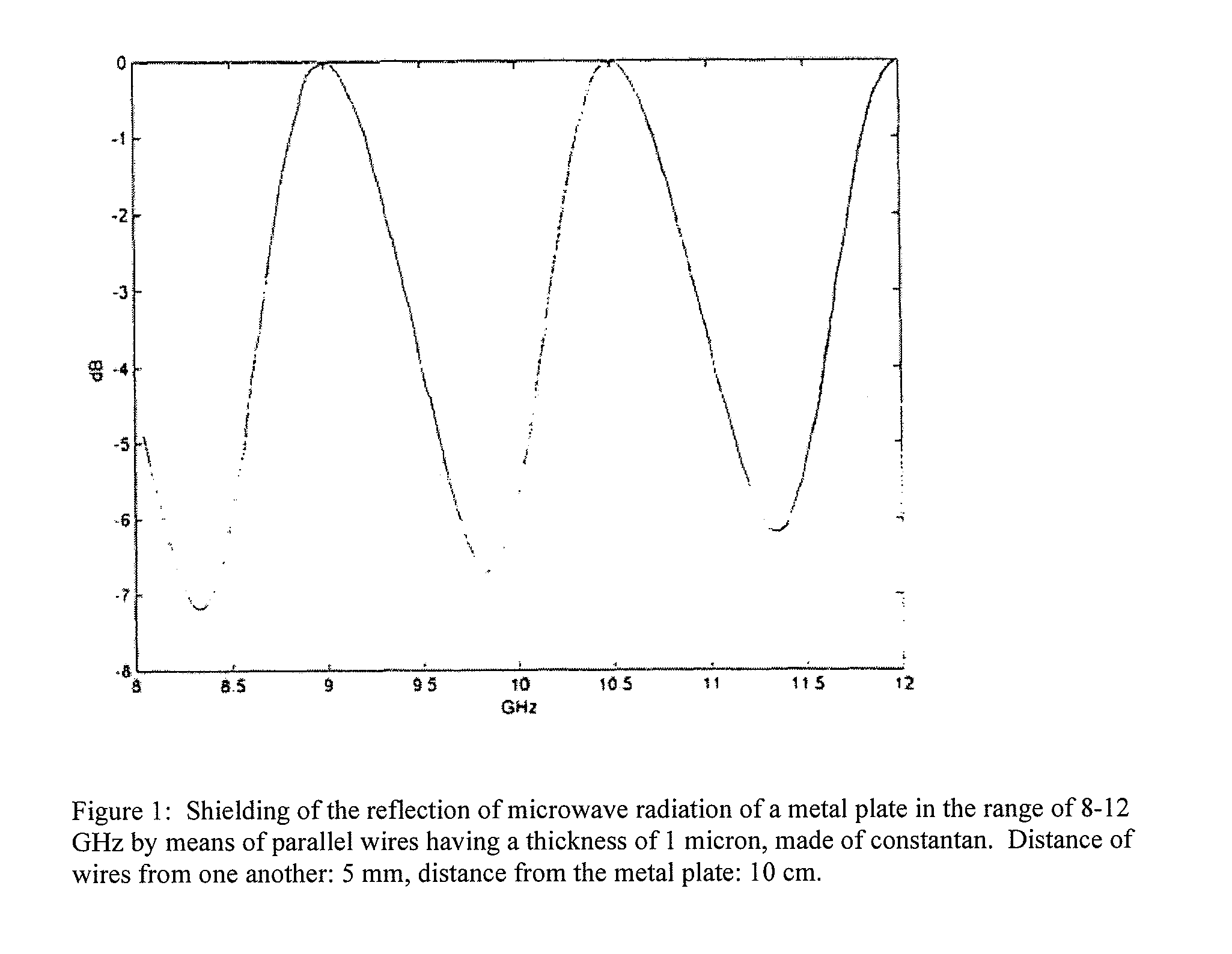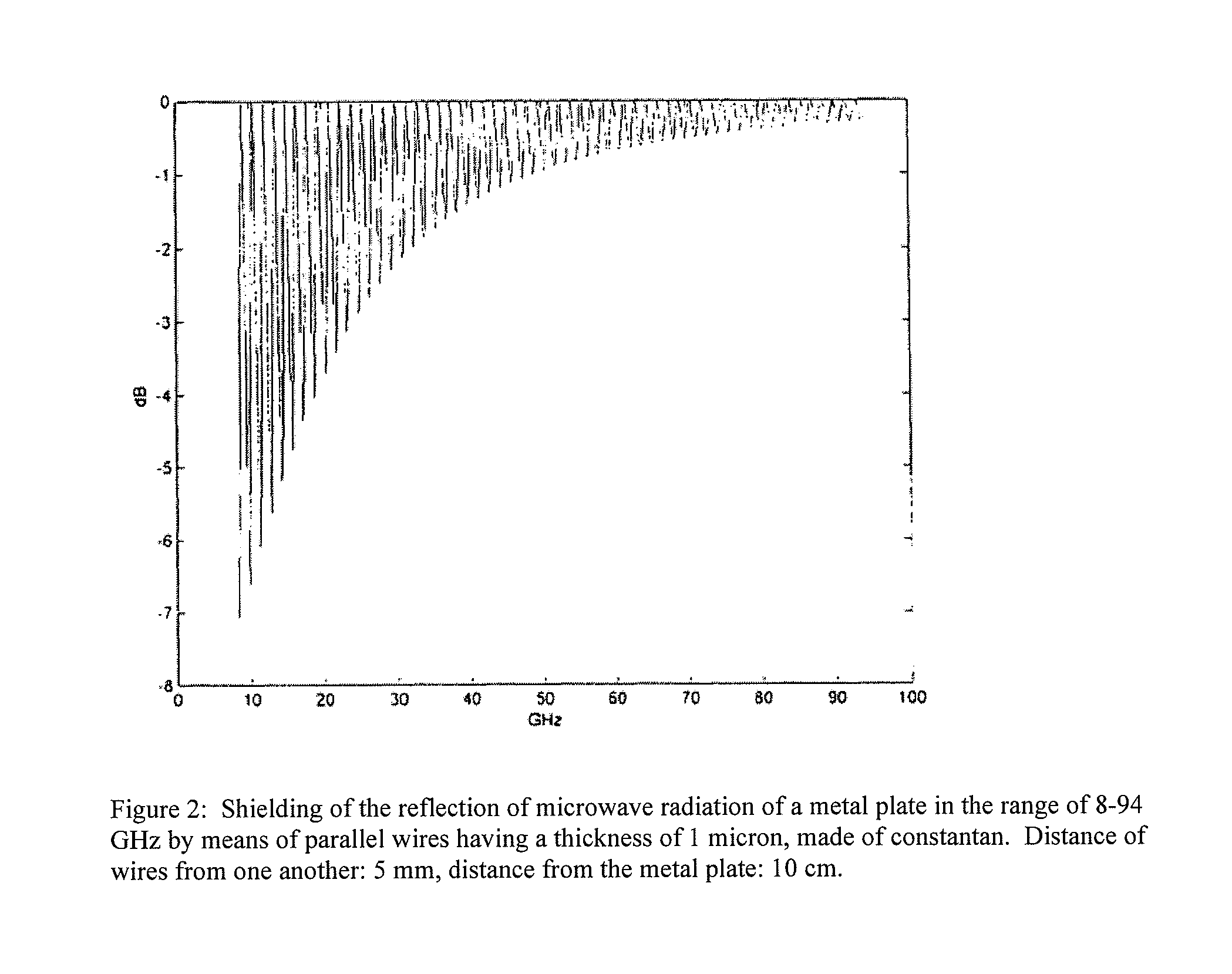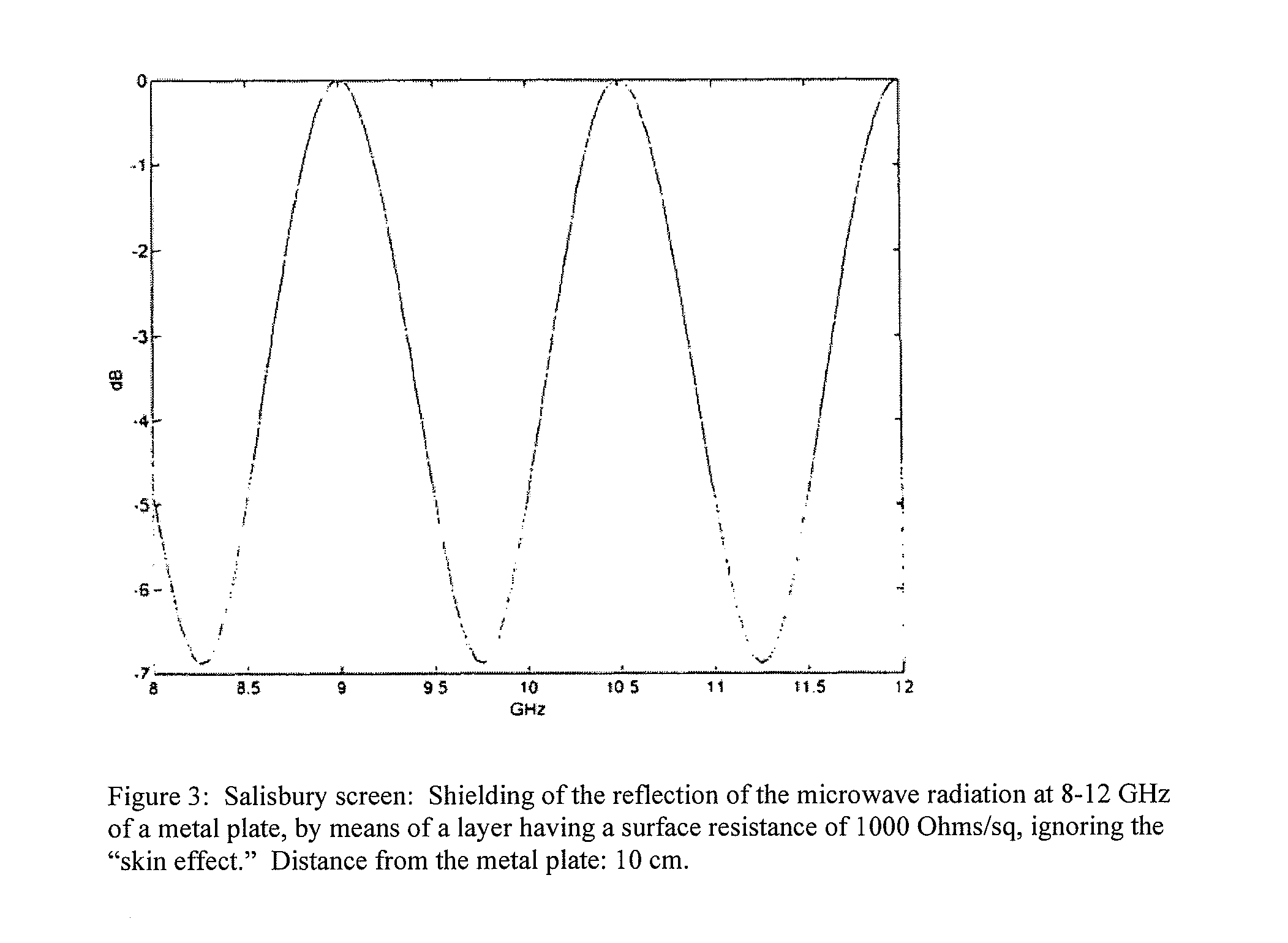Device for camouflaging objects and/or persons
a technology for camouflage objects and people, applied in the direction of superimposed coating process, liquid/solution decomposition chemical coating, manufacturing tools, etc., can solve the problems of reducing the protection effect of camouflage objects, nets, camouflage suits, etc., and reducing the surface resistance. , the effect of increasing the surface resistan
- Summary
- Abstract
- Description
- Claims
- Application Information
AI Technical Summary
Benefits of technology
Problems solved by technology
Method used
Image
Examples
Embodiment Construction
[0025]The present invention will be explained in greater detail, using an exemplary embodiment that will be described in the following, as an example.
[0026]A camouflage net was used, based on a woven polyester fabric or a woven aramid fabric, having a weight of 120 to 150 g / m2.
[0027]For the coating, a dispersion from the company Agfa-Gevaert Ltd. with the name Orgacon 5300, i.e. based on polyethylene dioxythiophene (PEDOT), was used.
[0028]Before the coating of polyethylene dioxythiophene is applied, the textile is preferably coated with a thin polyurethane coating. This pre-coating closes the surface slightly, and ensures that less PEDOT is absorbed by the textile during the immersion bath described in the following.
[0029]Coating of the woven polyester fabric or woven aramid fabric took place by means of immersion coating in a bath based on Orgacon 5300, dissolved or dispersed in the following composition:
N-methyl-2-2pyrrolidone 5-10%Diethylene glycol1-5%2-Heptadecyl benzimidazole-4...
PUM
| Property | Measurement | Unit |
|---|---|---|
| optical transparency | aaaaa | aaaaa |
| optical transparency | aaaaa | aaaaa |
| thickness | aaaaa | aaaaa |
Abstract
Description
Claims
Application Information
 Login to View More
Login to View More - R&D
- Intellectual Property
- Life Sciences
- Materials
- Tech Scout
- Unparalleled Data Quality
- Higher Quality Content
- 60% Fewer Hallucinations
Browse by: Latest US Patents, China's latest patents, Technical Efficacy Thesaurus, Application Domain, Technology Topic, Popular Technical Reports.
© 2025 PatSnap. All rights reserved.Legal|Privacy policy|Modern Slavery Act Transparency Statement|Sitemap|About US| Contact US: help@patsnap.com



